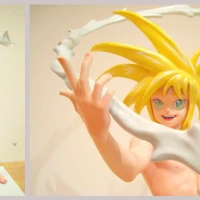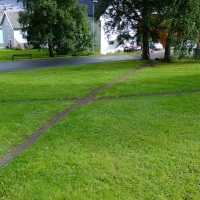I have an overwhelming sentimental attachment to crayons. (For some proof, check out the design of my Twitter page.) Not just the sense-memory of using crayons when I was a kid, but as an adult realizing the fundamental artistic ideas that those little sticks of wax represented to me; colour, creation, exploration, and (a particular sub-set of the general societal crayon fascination) the connection between word and colour. This, for a five year-old, is where written description and visual incarnation collided: the language of colour.
I remember the exact moment I figured out what “Burnt Sienna” meant, and immediately, there was this incredible shade, so much more than an “orange”, right there in my grubby little hand. Don’t even get me started on the others: Goldenrod, Raw Umber, Orchid, Periwinkle. The connection between what I read and what I saw was beautifully obvious, and obvious in its beauty.
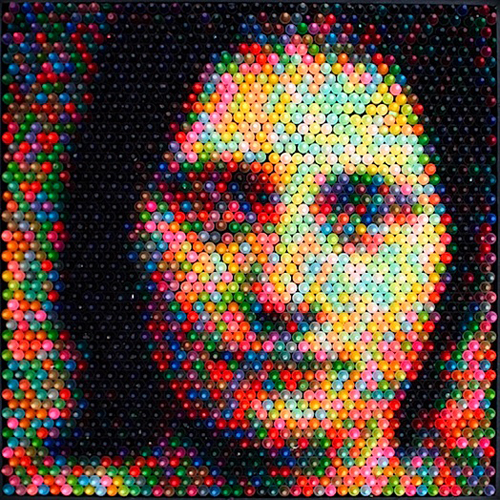
Artist Christian Faur understands not only the adult attraction to the ideals of crayons, but has amped them up to create incredible, hand-crafted, crayon-pixellated, eye-defying images that are unlike anything I’ve seen before. Straddling a crossing between sculpture and photography, wax and print, he assembles more than 100,000 hand-cast crayons of his own shades and hues into staggeringly beautiful works of art. Impressionistic, with a hint of trompe l’oeil, the tiny crayon columns of separate colour simultaneously appease the eye and defy it. This is crayon-Pointillism, taking the agonizingly detailed pin pricks of colour pain-stakingly arranged on the canvas, á la Georges Seurat, and leaving the brain to do the other half of the work. Its beauty is partially already realized by the patterns of colour, but then our eye struggles to put the rest together.
A master of balance, not just between bright shades, but between greys and primaries, he shows that he can not only deftly mix colours to imitate the physical nuance of an actual photograph, but also has the control to create the shapes in greys and white and augment the images artistically with colour, rather than creating the shapes with only colours themselves. It’s jarring and gorgeous, creating an almost physical sensation as our mind tries to adjust these point of colour into one big comprehensive picture. The experience of trying to see it is just as important as finally seeing.
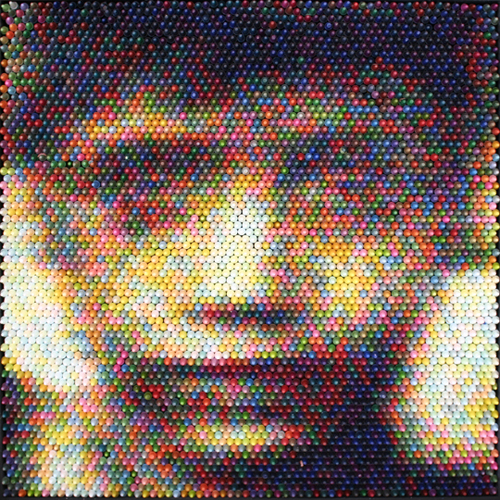
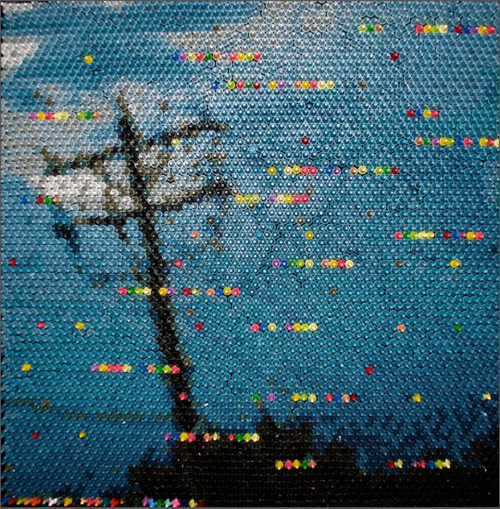
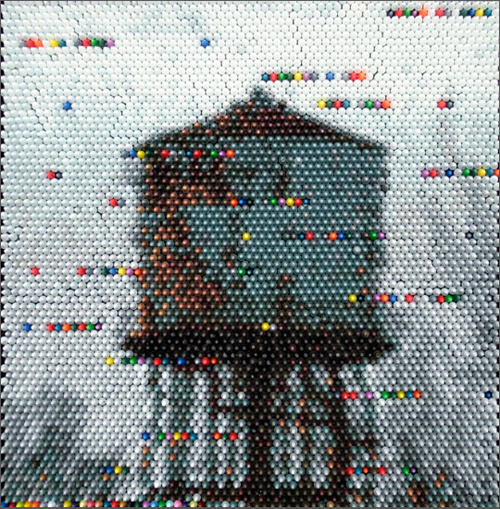
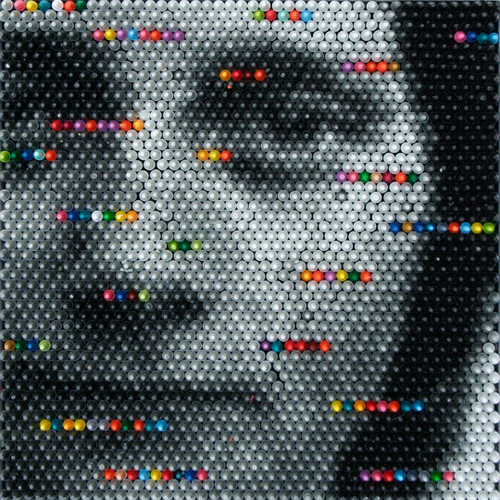
Seen from the side, not only does the work involved become more apparent, but an almost separate beauty emerges; the sculptural aspects of the pieces come into view, like miniature crayon horizons, tilted to reveal their relief, these side-ways typographies of colour give us a little insight, from this angle, of what our brains see so differently when viewed from straight on.
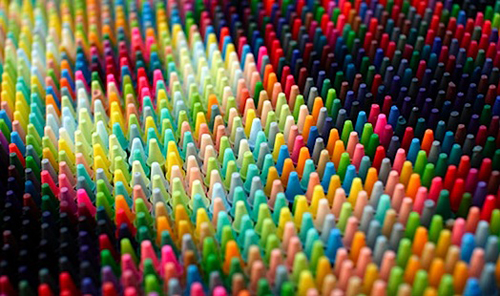
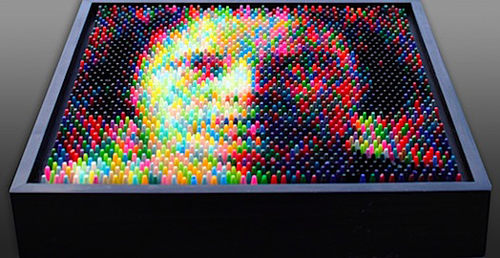
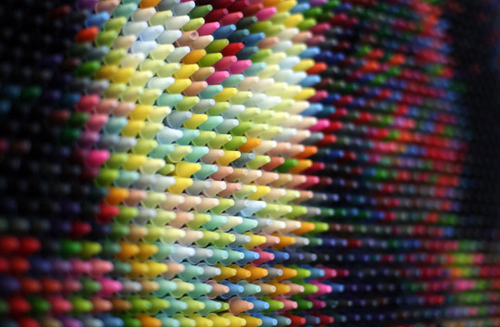
Says Faur on his website: “…I have developed a mapping system that translates the English alphabet into twenty six discrete colors and I use these crayon ‘fonts’ to add words and language to each of the pieces in the show… The direct representation of language in each piece further imbues the works with meaning and brings an aspect of color into each composition reminiscent of DNA coding. The alphabetic key at the lower left of each panel allows the viewer to interpret the individual words written throughout the various panels.”


